The Gentleman’s Guide to Craft Beers
Craft beer has experienced a surge in popularity in recent years, with beer enthusiasts embracing the diverse flavors and unique characteristics of craft brews. Whether you’re a seasoned beer aficionado or new to the world of craft beers, this gentleman’s guide will provide you with the knowledge and insights to appreciate and explore this fascinating realm.
First and foremost, it’s essential to understand what defines a craft beer. Craft beers are characterized by their small production quantity, independent ownership, and emphasis on quality and traditional brewing methods. Unlike mass-produced beers, craft beers are created with passion and creativity, resulting in a wide array of flavors and styles to explore.
Speaking of styles, the world of craft beer offers a vast spectrum of options to suit every palate. We’ll delve into various styles, such as Pale Ales, India Pale Ales (IPAs), Stouts and Porters, Wheat Beers, Sours and Lambics, and Amber and Red Ales, each with its unique flavors, ingredients, and brewing techniques.
Tasting and appreciating craft beers involves more than just taking a sip. Understanding aroma, color, and flavor profiles is essential to truly grasp the nuances of each brew. proper glassware and serving temperatures can enhance your drinking experience. Pairing craft beers with food can elevate both your culinary experience and the flavors of the beer.

To truly immerse yourself in the world of craft beer, it’s worth discovering local craft breweries. Urban breweries offer a bustling atmosphere and a wide range of experimental brews, while rural and farmhouse breweries provide a more rustic and traditional experience.
Craft beer festivals and events are also excellent opportunities to expand your knowledge and discover new favorites. These gatherings bring together passionate brewers, enthusiasts, and beer lovers, creating an environment of celebration and camaraderie.
For those looking to take their craft beer appreciation to the next level, becoming a craft beer connoisseur involves exploring various aspects. This includes homebrewing tips and resources for those interested in crafting their beers, joining craft beer clubs and organizations to connect with like-minded individuals, and keeping up with the latest craft beer trends to stay at the forefront of this ever-evolving industry.
So, prepare your taste buds and embark on a journey into the world of craft beers. By the end of this guide, you’ll not only be able to savor each sip but also appreciate the craftsmanship and passion behind every pint.
Key Takeaways:
- Craft beers maximize flavor: Craft beers are defined by their unique flavors and brewing methods, offering a wide range of styles to explore and enjoy.
- Understanding the profiles: Appreciate craft beers by paying attention to their aroma, color, and flavor profiles, allowing for a more nuanced tasting experience.
- Discovering local breweries: Discover the diversity of craft beers by visiting both urban and rural/farmhouse breweries, supporting local craftsmanship and learning about new brewing techniques.
What Defines a Craft Beer?
Craft beer is defined by various factors, including production methods, ownership, and innovation, which distinguish it from mass-produced beer. One key aspect of craft brewing is the use of traditional methods, such as small-batch brewing, which allows for greater control over the brewing process. Craft brewers prioritize the use of high-quality ingredients, including malt, hops, water, and yeast, to craft distinctive and flavorful beers. An important distinction of craft breweries is their independence from major beer corporations, as they operate autonomously, forging closer connections with consumers.
Craft brewers are renowned for their pioneering and experimental approach, continually pushing boundaries by incorporating different ingredients, employing new techniques, and creating unique flavors. These breweries also contribute to local economies and support small businesses, serving as integral parts of their communities. Craft beer truly showcases the dedication, ingenuity, and craftsmanship of its brewers, offering beer enthusiasts a diverse array of styles and flavors to explore. So, the next time you savor a beer, consider whether it embodies these criteria to fully appreciate the artisanal craftsmanship behind it.
Exploring Different Styles of Craft Beers
Get ready to embark on a captivating journey through the vast world of craft beers. In this section, we’ll dive into the various styles that make craft beers truly exceptional. From the hoppy and refreshing Pale Ales to the bold and robust Stouts and Porters. We’ll also explore the unique flavors of Wheat Beers, the tangy complexities of Sours and Lambics, and the alluring richness of Amber and Red Ales. So grab a pint and join us as we unravel the delightful tapestry of craft beer styles. Cheers to exploration!
Pale Ales
Pale Ales are a popular craft beer style known for their light color, hop-forward flavor, and balanced bitterness. They are brewed with pale malt, which gives them a distinctive golden or amber hue. Pale Ales have a refreshing and crisp taste, making them a go-to choice for beer enthusiasts.
Here is a table showcasing some well-known
| Brand | ABV | IBU | Flavor Profile |
|---|---|---|---|
| Sierra Nevada | 5.6% | 38 | Citrusy, Piney, Bitter |
| Dale’s Pale | 6.5% | 65 | Grapefruit, Hoppy, Malty |
| Founders Pale | 5.4% | 35 | Balanced, Caramel, Resinous |
| Bell’s Two | 7.0% | 50 | Biscuity, Floral, Spicy |
| Hearted Ale |
Pale Ales typically have an ABV ranging from 4% to 7% and IBU between 30 and 50. They offer hop-forward character with flavors and aromas of citrus, pine, and floral notes. Some varieties may have a malty backbone with caramel or biscuit flavors.
When choosing a Pale Ale, consider your taste preferences. If you enjoy a citrusy and hoppy profile, Sierra Nevada or Dale’s Pale Ale would be excellent choices. If you prefer a balanced and malty flavor, Founders Pale Ale or Bell’s Two Hearted Ale are great options.
Remember to drink responsibly and enjoy craft beers in moderation.
India Pale Ales
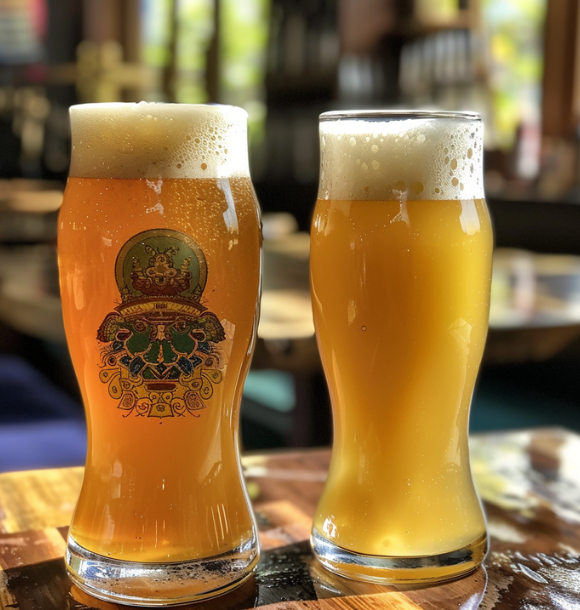
India Pale Ales (IPAs) are popular craft beers known for their hop-forward flavors and higher alcohol content. They originated in England in the 18th century and were brewed with extra hops for preservation during long voyages to India. Today, IPAs are enjoyed worldwide for their bold, bitter, and citrusy profiles.
To understand IPAs, let’s examine their key characteristics and examples:
– Appearance: IPAs have a pale to amber color and a slightly hazy appearance due to the hops used during brewing.
– Aroma: They have intense hop aromas, ranging from piney and resinous to floral and fruity.
– Flavor: IPAs have a strong hop bitterness balanced with malty sweetness. The hop flavors can include citrus, tropical fruit, pine, and herbal notes.
– Examples: Popular IPAs include Sierra Nevada’s Torpedo IPA, Stone Brewing’s IPA, and Dogfish Head’s 60 Minute IPA.
– Food Pairing: IPAs pair well with bold, spicy, and flavorful foods. They complement grilled meats, spicy curries, and strong cheeses.
– Brewing Techniques: Brewers use various hop varieties and hopping techniques to create unique flavors and aromas in IPAs. Dry hopping, adding hops during fermentation, is common.
Stouts and Porters
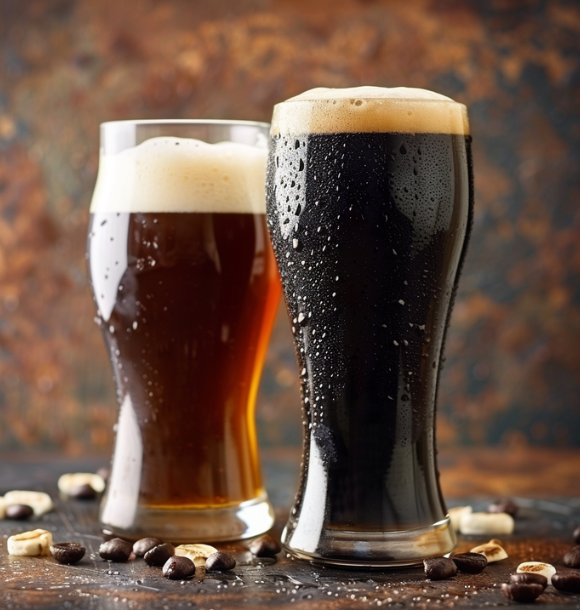
Stouts and porters are popular craft beers, known for their dark color and rich flavor. These beers are brewed using roasted malts or roasted barley, which gives them their characteristic taste.
Stouts and porters are typically dark brown to black in color, often opaque or near opaque. They have a complex flavor profile, with notes of chocolate, coffee, roasted malt, and sometimes hints of fruit or smoke.
The alcohol content of stouts and porters can vary, ranging from 4% to 10%, and some imperial stouts can exceed 10%. These beers pair well with hearty dishes such as stews, grilled meats, chocolate desserts, and strong cheeses.
Stouts and porters have gained popularity among beer enthusiasts for their depth of flavor and ability to be aged. So, next time you’re at a craft beer bar or brewery, be sure to sample some stouts and porters and discover the wonderful world of dark beers.
Wheat Beers
Key Aspects to Consider
1. Ingredients: Wheat beers incorporate a significant amount of wheat malt in addition to barley malt, resulting in a distinct taste and texture.
2. Flavor Profile: Wheat beers exhibit a lighter body and a refreshing taste, featuring fruity or spicy flavors such as banana, clove, or citrus.
3. Variations: Various types of wheat beers exist, including German Hefeweizen, Belgian Witbier, and American Wheat Beer, each with its own unique characteristics and brewing traditions.
4. Serving Temperature: To enhance the flavors and aromas, it is recommended to serve wheat beers cool, between 40-45°F (4-7°C).
5. Glassware: Wheat beers are typically enjoyed in tall, curved glasses like Weizen or Belgian tulip glasses. These glasses not only maintain the beer’s head but also capture its aromas.
6. Food Pairings: Wheat beers complement a wide range of dishes including salads, seafood, grilled chicken, and creamy cheeses. They also enhance the flavors of spicy cuisines like Asian or Mexican dishes.
7. Seasonal Enjoyment: While Hefeweizens are particularly popular during the summer, wheat beers can be enjoyed throughout the year, depending on personal preferences.
Consider these factors to fully appreciate and choose the wheat beer that best suits your taste and occasion. Whether it’s a sunny day calling for a German Hefeweizen or a delicious meal paired with a Belgian Witbier, wheat beers offer a diverse and enjoyable craft beer experience.
Sours and Lambics
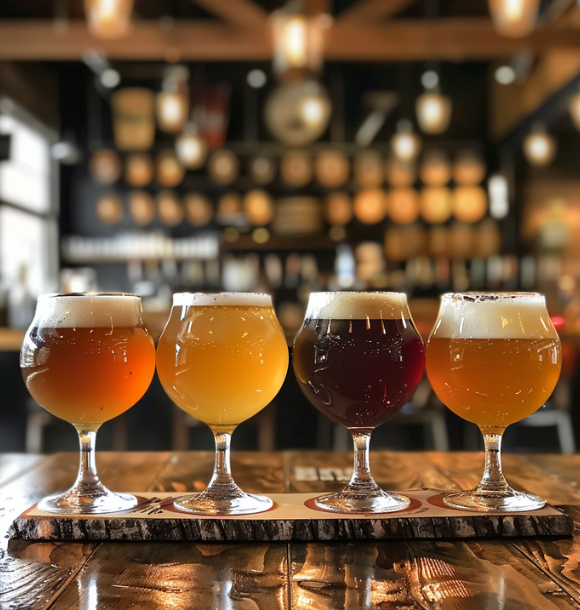
Sours and Lambics are unique craft beer styles with distinctive taste and flavor profiles. Let’s explore these styles:
Sours:
Sours have a tart and acidic taste achieved through a process called souring, where specific bacteria or wild yeast are added during fermentation. This results in a complex and refreshing flavor profile with fruity, funky, and sometimes vinegar-like notes.
Lambics:
Lambics are traditional Belgian beers fermented using wild yeast and bacteria present in the air. They are often brewed in the Pajottenland region of Belgium. These beers have a unique character with tart and acidic flavors, as well as fruity and funky notes. They are typically aged in wooden barrels, adding complexity to the flavor.
Blends:
Blending is common in the production of sour and lambic beers. Brewers often blend different batches or vintages to achieve a desired flavor profile, creating a balanced beer with a consistent taste.
Food Pairing:
Sours and lambics are versatile when it comes to pairing with food. Their tartness and acidity complement a wide range of dishes. They pair well with seafood, salads, cheeses, and even desserts like fruit tarts. The sourness cuts through rich and fatty foods, providing a refreshing contrast.
Popularity:
Sours and lambics have gained popularity among craft beer enthusiasts in recent years. Their unique flavors and complexity make them a favorite among those looking for something different and adventurous. They offer a refreshing break from traditional beer styles.
Amber and Red Ales
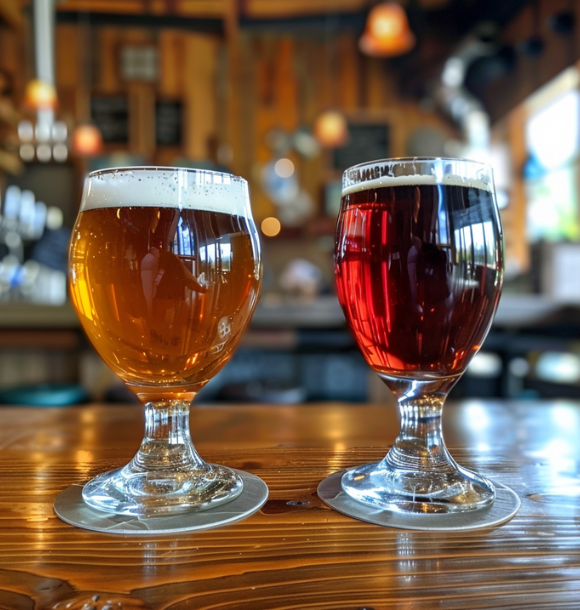
Amber and red ales are highly sought-after craft beers, renowned for their deep amber or red hue and rich malt profile. These beers offer a harmonious blend of maltiness and hop flavors. Below are key elements to keep in mind when appreciating and delving into the world of amber and red ales:
1. Appearance: Amber and red ales exhibit a captivating reddish-brown color that evokes images of autumn foliage. This enchanting hue is a result of the skillful use of roasted malts during the brewing process.
2. Aroma: These beers boast a complex aroma characterized by enticing hints of caramel, toffee, and toasted bread. The forward presence of malt is accompanied by subtle hop aromas, which lend a delicate touch of bitterness.
3. Flavor: Amber and red ales provide a balanced and gratifying taste experience. The sweetness derived from the malt introduces delectable notes of caramel, biscuit, and nuttiness. Hops contribute a mild bitterness that harmonizes the overall flavor.
4. ABV: The alcohol by volume (ABV) of amber and red ales may vary, but it typically falls within the moderate range of 5% to 7%. This moderate ABV makes these beers approachable and enjoyable for beer enthusiasts of all preferences.
5. Food Pairing: Amber and red ales serve as the perfect complement to a diverse array of dishes. The maltiness adeptly accompanies grilled meats, barbecue delicacies, and savory stews, while the hop bitterness skillfully cuts through the bold flavors of spicy foods and robust cheeses.
6. Glassware: To fully savor and appreciate the intricate aromas and flavors present in amber and red ales, it is recommended to serve them in tulip or pint glasses. This enhances the overall drinking experience and facilitates the exploration of their exceptional qualities.
By familiarizing yourself with these defining characteristics, you can confidently immerse yourself in the wide range of amber and red ales available in the craft beer market. Here’s to embarking on a journey of discovering your favorite brew!
Tasting and Appreciating Craft Beers
Discover the art of tasting and appreciating craft beers like a true gentleman. Unveil the secrets of understanding aroma, color, and flavor profiles, and learn the importance of serving craft beers in proper glassware at the right temperatures. Elevate your beer experience by exploring the world of pairing craft beers with delicious food. Get ready to embark on a sensory journey that will awaken your taste buds and enhance your love for craft beers.
Understanding Aroma, Color, and Flavor Profiles
To fully appreciate craft beers, it is important to understand the aspects that contribute to their aroma, color, and flavor. These characteristics play a crucial role in distinguishing one craft beer style from another.
Aroma:
Craft beer aroma is influenced by factors such as ingredients, brewing process, and yeast strains. Hops contribute floral, citrus, spice, or piney notes, while malt provides aromas of caramel, roasted grains, or chocolate.
Color:
Craft beer color can range from pale straw to deep black. It is determined by the type and amount of malts used. Lighter malts result in lighter-colored beers, while darker malts create amber, brown, or black hues. Color gives an initial impression of flavor profiles.
Flavor Profiles:
Craft beer flavors are complex and diverse, influenced by malts, hops, yeast, and other ingredients. They range from nutty, fruity, citrusy, spicy, caramel, to coffee and chocolate notes. Bitterness from hops adds to the overall flavor experience.
Understanding the aroma, color, and flavor profiles lets you appreciate the craftsmanship and creativity behind brewing each unique style. Whether you prefer a hop-forward IPA with tropical fruit aromas, a rich and malty stout with chocolate and coffee flavors, or a crisp and refreshing wheat beer with citrusy notes, exploring the diverse world of craft beer flavors is an exciting journey for any beer enthusiast.
Proper Glassware and Serving Temperatures
Proper glassware and serving temperatures enhance the craft beer drinking experience. Each beer style has recommended glassware that enhances aroma, color, and presentation. The appropriate glass allows the beer to breathe and captures its unique characteristics. The serving temperature is also important. Serving a beer at the right temperature optimizes flavor and aroma perception. While preferences may vary, these recommended temperatures bring out the best in craft beers. By using the proper glassware and serving at the appropriate temperature, craft beer enthusiasts can fully appreciate the distinct qualities of each style. This simple yet significant way enhances the craft beer experience.
Pairing Craft Beers with Food
To fully enjoy craft beers, pair them with the right foods. The key is finding complementary flavors and balancing the intensity of both the beer and the dish. Here is a table showcasing popular craft beer styles and their ideal food pairings:
| Craft Beer Style | Ideal Food Pairing |
| Pale Ales | Spicy foods, grilled meats, citrusy salads |
| India Pale Ales (IPAs) | Spicy curries, strong cheeses, bold-flavored burgers |
| Stouts and Porters | Chocolate desserts, hearty stews, smoked meats |
| Wheat Beers | Light seafood dishes, salads, fruity desserts |
| Sours and Lambics | Goat cheese, salads with vinaigrette dressings, shellfish |
| Amber and Red Ales | Grilled sausages, roasted vegetables, caramel-based desserts |
Remember, personal preferences play a role in pairing craft beers with food. Experiment and find combinations that enhance each other’s flavors. When unsure, match the intensity of the beer with similarly intense flavors. The carbonation and bitterness of the beer can cleanse and refresh the palate between bites, making it ideal for rich or fatty foods.
Pairing craft beers with food adds enjoyment to both the beer and the culinary experience. Consider the flavors and characteristics of the beer, as well as the flavors and textures of the dish, to create harmonious combinations that delight your taste buds. Cheers to exploring the wonderful world of craft beer and food pairings!
Discovering Local Craft Breweries
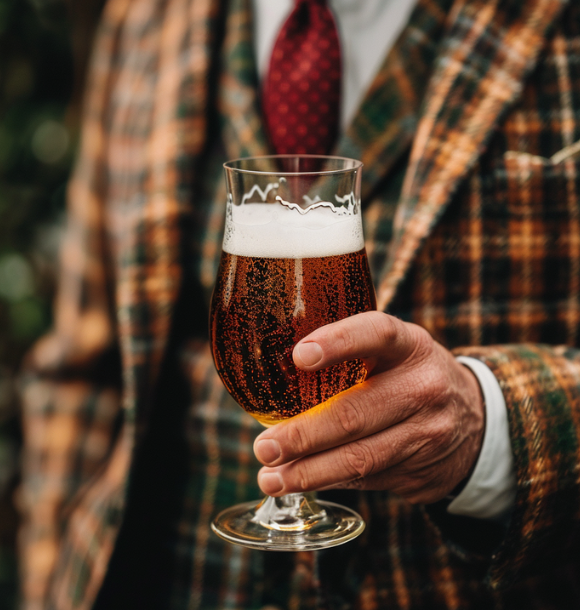
Uncover the hidden gems of craft beer at local breweries! Journey into the world of craft brewing as we explore urban breweries, bursting with the vibrant spirit of the city. Then, venture off the beaten path to discover the charm of rural and farmhouse breweries, where traditional techniques enliven the rich flavors. Get ready to tantalize your taste buds with unique brews, curated by passionate artisans. It’s time to embark on a flavorful expedition, embracing the true essence of craft beers.
Urban Breweries
Urban Breweries offer a unique craft beer experience in cities. These breweries contribute to the beer culture and provide opportunities to explore a variety of beer styles.
1. Urban Breweries create a lively atmosphere in the city. These breweries are located in industrial or trendy areas, and their taprooms attract beer enthusiasts seeking a vibrant ambiance.
2. Urban Breweries showcase diverse beer styles. From hop-forward IPAs to rich stouts and refreshing wheat beers, these breweries offer options to cater to different taste preferences.
3. Urban Breweries collaborate with local businesses and communities. This fosters a sense of community and allows brewers to experiment with unique flavors and ingredients sourced locally.
4. Urban Breweries offer guided tours to learn about the brewing process firsthand. Visitors can witness the craftsmanship behind their favorite beers and learn about brewing techniques utilized.
5. Urban Breweries host events and beer tastings, allowing beer enthusiasts to engage with like-minded individuals and expand their knowledge about craft beer.
6. Urban Breweries contribute to the local economy by creating jobs and supporting local suppliers. They are passionate about sustainable practices, including sourcing ingredients locally and implementing eco-friendly brewing techniques.
7. Urban Breweries are key players in the craft beer industry, driving innovation and creativity. They push boundaries with experimental brews and unique flavor combinations, constantly striving to create exciting beer experiences.
Visiting an urban brewery allows beer lovers to immerse themselves in the local beer scene, indulge in delicious brews, and support the craft beer community.
Rural and Farmhouse Breweries
Rural and Farmhouse Breweries are important to the craft beer industry. They offer a unique brewing experience. These breweries are usually located in rural areas, often on farms or in countryside settings. They focus on creating beers that reflect the local terroir and agricultural heritage.
Here is a table showing key characteristics of rural and farmhouse breweries:
| Characteristics | Description |
|---|---|
| Location | Rural areas, often on farms or in countryside settings |
| Terroir Influence | Beers capture flavors and essence of the local environment |
| Locally-Sourced Ingredients | Emphasis on using ingredients grown or sourced locally |
| Farm-to-Table Concept | Many breweries have their own hop yards, orchards, or grain fields |
| Traditional Brewing Methods | Often employ age-old techniques and recipes |
| Small-Scale Production | Focus on quality over quantity, producing limited batches |
| Breathtaking Scenery | Enjoy beautiful landscapes and picturesque views |
| Community Engagement | Breweries often host events and collaborate with local businesses |
Rural and farmhouse breweries provide a unique opportunity to experience craft beer in a natural and community-focused setting. Visiting these breweries allows you to enjoy delicious and distinctive beers while immersing yourself in the local culture and traditions. If you’re a craft beer enthusiast seeking an authentic and immersive brewing experience, exploring rural and farmhouse breweries should be a priority.
Craft Beer Festivals and Events

Photo Credits: Www.Moderngentlemanmagazine.Com by Jerry Jones
Craft Beer Festivals and Events bring beer enthusiasts together to celebrate their love for craft beer. These events offer a chance to sample different craft beers and learn about the brewing process. Here are key aspects to consider when attending craft beer festivals and events:
1. Variety: Craft beer festivals showcase a diverse range of breweries and beer styles. Attendees can taste different types of beers like IPAs, stouts, lagers, and sours, allowing them to explore new flavors and styles.
2. Community: Craft beer events foster a sense of community among beer lovers. People gather to share their passion for craft beer, exchange recommendations, and engage in conversations.
3. Education: Festivals offer educational opportunities like beer tasting seminars and brewing workshops. These events provide insights into the brewing process, ingredient selection, and beer pairing, enhancing attendees’ understanding and appreciation.
4. Entertainment: Craft beer festivals feature live music, food vendors, and games, creating a festive atmosphere. These elements contribute to the overall experience, making the festival more than just a tasting event.
5. Support for local breweries: Craft beer festivals prioritize local breweries, giving them a platform to showcase their products. Attending these events supports and helps discover new local breweries.
6. Responsible drinking: Remember to drink responsibly at these events. Enjoy the craft beers but be mindful of alcohol consumption and utilize designated driver services or public transportation options if available.
Craft beer festivals and events offer an enjoyable experience for beer enthusiasts. From the variety of beers to the sense of community, these events immerse attendees in the craft beer culture.
Becoming a Craft Beer Connoisseur
Ready to take your love for craft beers to the next level? In this section, we’ll explore the art of becoming a craft beer connoisseur. From homebrewing tips and resources to joining craft beer clubs and organizations, and keeping up with the latest trends, we’ve got you covered. Get ready to delve into the world of craft beer with a discerning palate and a thirst for knowledge. Cheers to becoming a true craft beer aficionado!
Homebrewing Tips and Resources
When homebrewing craft beers, follow these tips and use the resources provided to improve your skills.
1. Invest in quality equipment: Use a brewing kit with a fermenter, airlock, thermometer, hydrometer, and racking cane.
2. Sanitize everything: Clean and sanitize all equipment and utensils before and after each use to avoid contamination.
3. Follow the recipe: Use a tried and tested recipe for consistent results and to understand the brewing process.
4. Control fermentation temperature: Achieve optimal fermentation by investing in a temperature-controlled chamber or using a temperature controller.
5. Join homebrewing communities: Connect with other brewers through online forums, local meetings, and competitions to learn from experienced individuals.
6. Experiment with ingredients: Be creative and try different hops, malts, and yeast strains to create unique flavors and styles.
7. Record your brewing process: Keep detailed notes of recipe adjustments and results to improve techniques and replicate successful batches.
8. Explore brewing resources: Utilize books like “How to Brew” by John Palmer and the “Homebrewing” section on the American Homebrewers Association website for valuable information and step-by-step guides.
By following these tips and utilizing available resources, you can enhance your brewing skills and create delicious craft beers at home.
Joining Craft Beer Clubs and Organizations
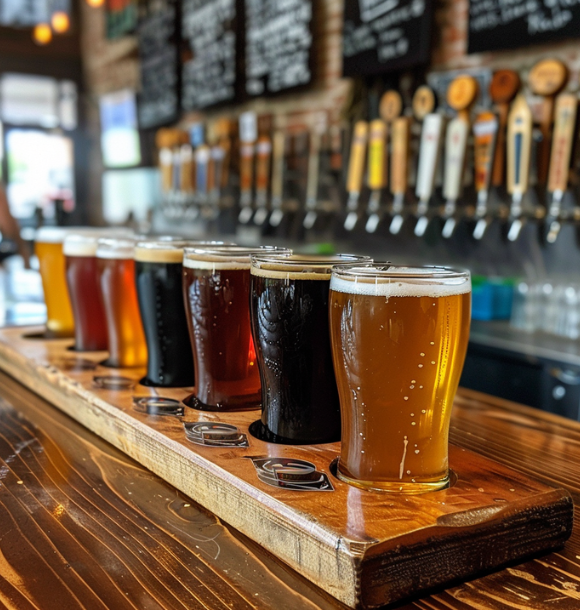
If you’re passionate about craft beer and want to connect with like-minded people and expand your knowledge, joining craft beer clubs and organizations can help. Here are the steps to consider:
- Research different clubs and organizations: Look for local, regional, and national craft beer clubs and organizations that align with your interests. Consider membership benefits, events, and the overall community. For more information, check out The Gentleman’s Guide to Craft Beers.
- Review membership requirements: Note any specific requirements like age restrictions or fees. Make sure you meet the criteria before applying.
- Submit an application: Follow the club or organization’s application process, which may involve completing an online form or contacting a representative.
- Attend meetings and events: Once accepted, regularly participate in club meetings and events. Learn from experienced enthusiasts, partake in tastings, and engage in craft beer discussions.
- Be active: Share your own knowledge, experiences, and recommendations. Get involved in club activities such as organizing tastings or brewery visits.
- Stay updated: Keep up with craft beer news, trends, and educational resources. Stay connected through newsletters, online forums, or social media.
- Network and make connections: Take advantage of networking opportunities. Build relationships with members, brewers, and industry professionals to enhance your craft beer journey.
By joining craft beer clubs and organizations, you can deepen your appreciation for craft beer, gain valuable insights, and make lasting connections within the vibrant craft beer community.
Keeping Up with Latest Craft Beer Trends
When it comes to keeping up with the latest craft beer trends, there are several factors to consider. To fully immerse yourself in this dynamic industry, it is important to stay informed and aware of the evolving craft beer landscape. Here are some essential ways to stay updated on the latest trends:
1. Follow craft beer publications and websites: To stay up-to-date with industry news and trends, make sure to follow reputable sources. By doing so, you can gain insights into new beer styles, ingredient innovations, and emerging breweries.
2. Engage with social media platforms: Joining craft beer communities on platforms like Instagram, Facebook, and Twitter can keep you connected to real-time updates on new releases, collaborations, and trends. Follow breweries, beer bloggers, and influencers for the latest information.
3. Attend industry events: Craft beer festivals and events provide excellent opportunities to try new beers, network with professionals, and learn about the latest trends directly from brewers and experts.
4. Join a beer club: Being part of a beer club offers access to curated selections of craft beers, including limited releases and exclusive collaborations. By becoming a member, you can stay ahead of the curve and discover new styles and trends before they hit the mainstream market.
5. Visit local breweries: Regularly visiting local breweries and taprooms allows you to experience beer innovation firsthand. Brewers often experiment with unique ingredients and brewing techniques, so trying their latest offerings can provide valuable insight into the current trends.
By keeping up with craft beer trends, enthusiasts can discover new flavors, stay ahead of the curve, and fully engage with the vibrant craft beer community. Actively participating in these activities deepens beer lovers’ appreciation and knowledge of this continually evolving industry.
Frequently Asked Questions
1. What is the history of beer and how did it evolve into craft beer?
Beer played a significant role in human history, starting from the settlement of hunter-gatherers. The brewing process began when barley fell into water and germinated, creating sugars that could be converted into alcohol. In ancient history, women brewed beer to sustain their families during difficult times. Religious orders took over beer making in the Middle Ages, and men became the principal brewers as it became profitable. Kings started controlling beer production and distribution, leading to the creation of state breweries. Beer was brought to the New World by early explorers, and the craft of brewing experienced a renaissance with few restrictions. Czech and German immigrants introduced Pilsner-style lagers, and American breweries adopted the style for its storage and mass production qualities. Prohibition in the early 20th century caused many breweries to shut down, but beer made a comeback during the Great Depression and World War II with the rise of light lagers brewed with corn. The craft beer industry began to thrive in the mid-80s, and today there are over 1,390 craft breweries in the United States, each offering unique flavors and experiences.
2. What are the main ingredients in craft beer and how do they contribute to its flavor?
Craft beer is made from four main ingredients: water, hops, malt, and yeast. Water is crucial as it affects the taste of the beer based on its mineral content. Hops add bitterness, flavor, and aroma to the beer, and there are many different varieties available. Malt, specifically malted barley, is soaked in water, dried, cracked, and boiled to initiate the brewing process. It contributes flavors such as toffee, caramel, biscuit, and nuts. Yeast converts sugars into alcohol and carbon dioxide through fermentation. Different types of yeast are used for ales and lagers, and craft beer can even use unique yeast types like sourdough bread yeast to create experimental flavors. These four ingredients work together to create the complex taste profiles found in craft beers.
3. How should one taste and appreciate craft beer properly?
When tasting craft beer, it is important to focus on its appearance, aroma, flavor, and finish/mouthfeel. The color of the beer can provide an indication of its taste, with darker beers usually being sweeter. Swirling the beer in the glass and taking a few sniffs can help identify its aroma, which can vary from person to person. Taking small sips and moving the beer around in the mouth allows for a better taste experience, allowing the flavors to develop. The aftertaste left in the mouth after swallowing, known as the finish, is influenced by the bitterness of the hops and the viscosity of the beer. By carefully observing these aspects, one can fully appreciate and enjoy the complexities of craft beer.
4. What are the different categories of flavors found in craft beer?
Craft beer offers a wide range of flavors categorized into different types. Light/crisp beers are refreshing and pair well with most foods, carrying flavors like lemons, biscuits, and a hint of grass. Citrus/fruity beers are hop-heavy and have refreshing, bitter citrus flavors such as grapefruit and berries. Malt/toffee beers are sweeter and often warm the palate with flavors like toffee, caramel, biscuit, and nuts. Roasted/dark beers are brewed with darker malts, offering rich, full-bodied flavors like chocolate, coffee, licorice, and toast. Wild/funky beers are experimental and can have flavors like tartness, smoke, oak, and sourness. With such diverse flavors available, there is always a craft beer suited to individual tastes and preferences.
5. How is craft beer different from brand lagers?
Craft beer is distinguished from brand lagers in several ways. Craft beer often uses more hops and focuses on experimentation with flavors, yeast types, and aging processes. This results in craft beers having drastically different tastes from one another, offering unique and sometimes unconventional combinations. On the other hand, brand lagers tend to be more standardized and similar in taste across different brands. Lagers and ales use different types of yeast and have different fermentation processes. Lager yeast ferments from the bottom and goes through a cold conditioning process, while ale yeast ferments from the top and at warmer temperatures. As a result, ales generally have a stronger and more potent taste compared to lagers.
6. How has craft beer become popular and what is the current state of the craft beer industry?
Craft beer has become increasingly popular and mainstream over the years. With a focus on unique flavors and variety, craft breweries have gained a following among beer enthusiasts and those looking for new taste experiences. The craft beer industry has blossomed, with currently over 1,390 craft breweries in the United States alone. These breweries offer a wide range of beer styles and flavors, catering to different preferences and tastes. Despite restrictions and challenges faced by the industry, craft beer continues to thrive and expand, providing beer lovers with a vast and ever-evolving selection of high-quality brews.
